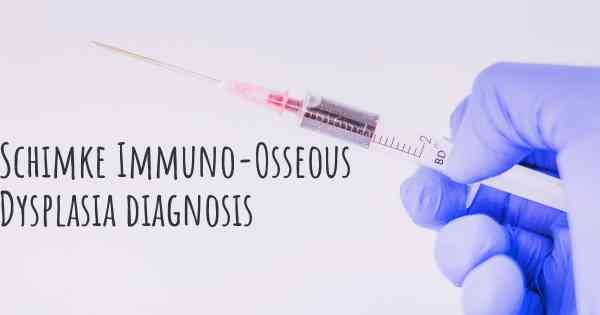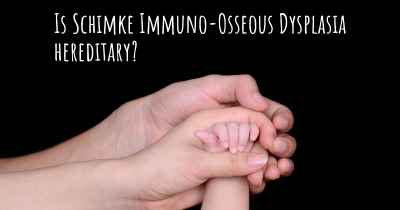How is Schimke Immuno-Osseous Dysplasia diagnosed?
See how Schimke Immuno-Osseous Dysplasia is diagnosed. Which specialists are essential to meet, what tests are needed and other useful information for the diagnosis of Schimke Immuno-Osseous Dysplasia

Schimke Immuno-Osseous Dysplasia (SIOD) is a rare genetic disorder that affects multiple systems in the body, including the immune system and skeletal development. Diagnosing SIOD can be challenging due to its rarity and the variability of symptoms among affected individuals. However, there are several key diagnostic methods that healthcare professionals utilize to identify this condition.
1. Clinical Evaluation: The diagnostic process typically begins with a thorough clinical evaluation of the patient's medical history and physical examination. The healthcare provider will look for characteristic signs and symptoms associated with SIOD, such as short stature, kidney problems, and a weakened immune system.
2. Radiographic Studies: X-rays and other radiographic studies play a crucial role in diagnosing SIOD. These imaging techniques help identify skeletal abnormalities that are often present in affected individuals. Radiographic findings may include abnormal bone growth, particularly in the long bones of the arms and legs, as well as changes in the shape and structure of the spine.
3. Laboratory Tests: Various laboratory tests are conducted to assess the immune system function and detect specific genetic mutations associated with SIOD. Blood tests can reveal abnormalities in white blood cell counts, immunoglobulin levels, and lymphocyte function. Additionally, genetic testing can identify mutations in the SMARCAL1 gene, which is responsible for causing SIOD.
4. Renal Evaluation: Kidney problems are a common feature of SIOD, so a thorough evaluation of renal function is essential for diagnosis. This may involve urine tests to check for proteinuria (presence of excess protein in the urine) and blood tests to assess kidney function. Imaging studies, such as ultrasound or MRI, may also be performed to evaluate the structure and function of the kidneys.
5. Biopsy: In some cases, a kidney biopsy may be recommended to further investigate renal abnormalities. A small sample of kidney tissue is obtained and examined under a microscope to assess for specific changes associated with SIOD, such as focal segmental glomerulosclerosis.
It is important to note that the diagnosis of SIOD requires the presence of multiple clinical features and confirmation of genetic mutations. Due to the complexity of the condition, a multidisciplinary approach involving various medical specialists, including geneticists, nephrologists, immunologists, and radiologists, is often necessary to reach an accurate diagnosis.
Once a diagnosis of SIOD is confirmed, appropriate management strategies can be implemented to address the specific symptoms and complications associated with the condition. Regular monitoring and follow-up care are crucial to optimize the overall health and well-being of individuals with SIOD.








